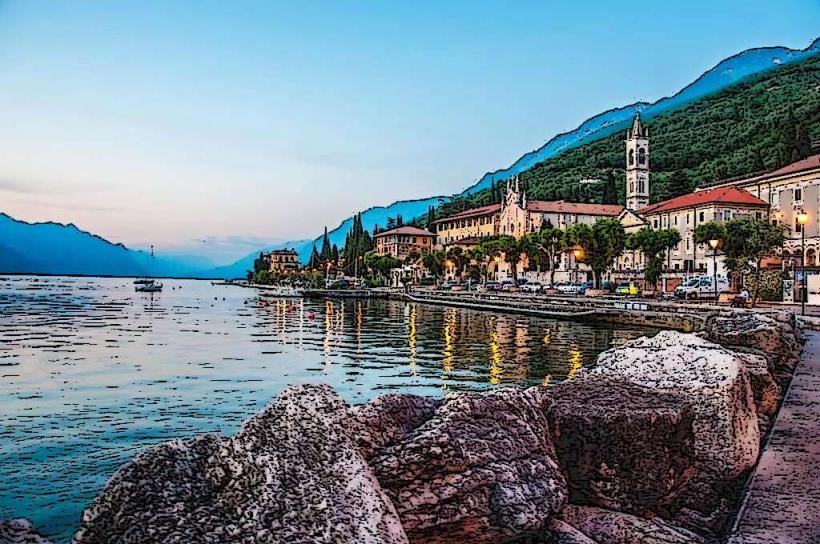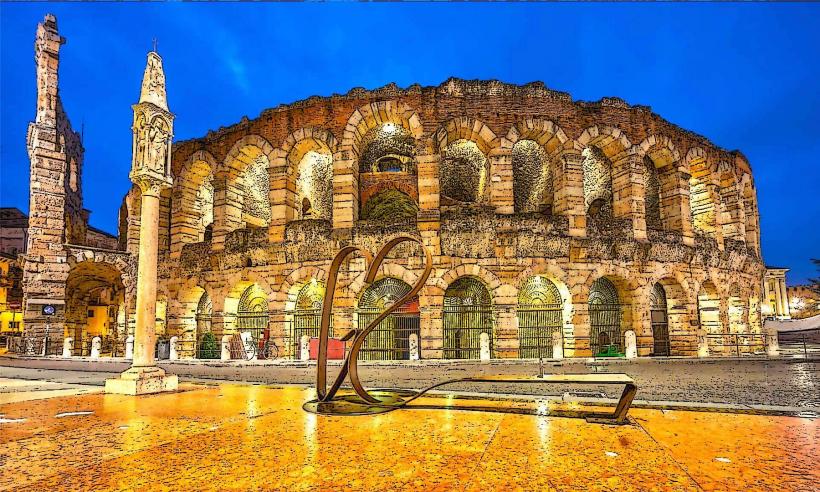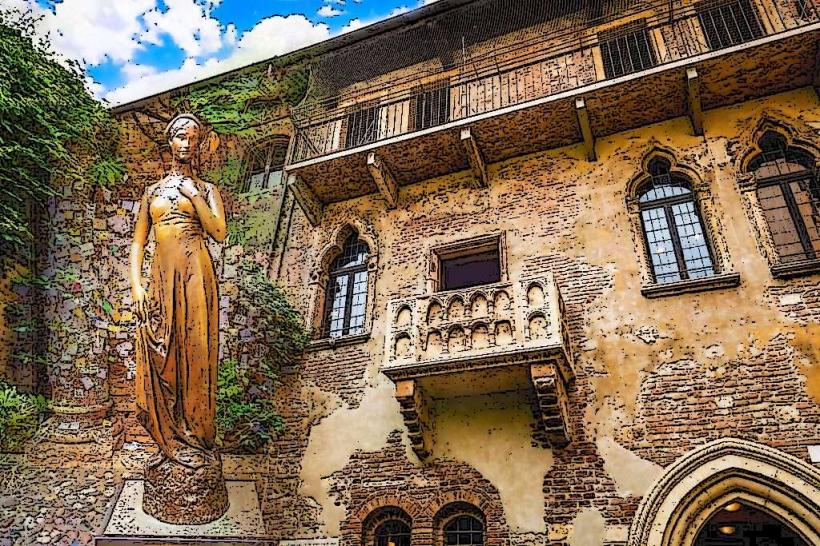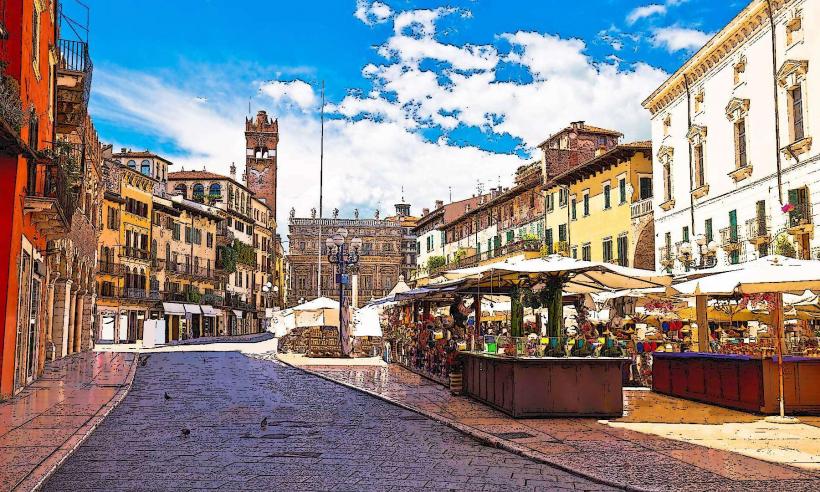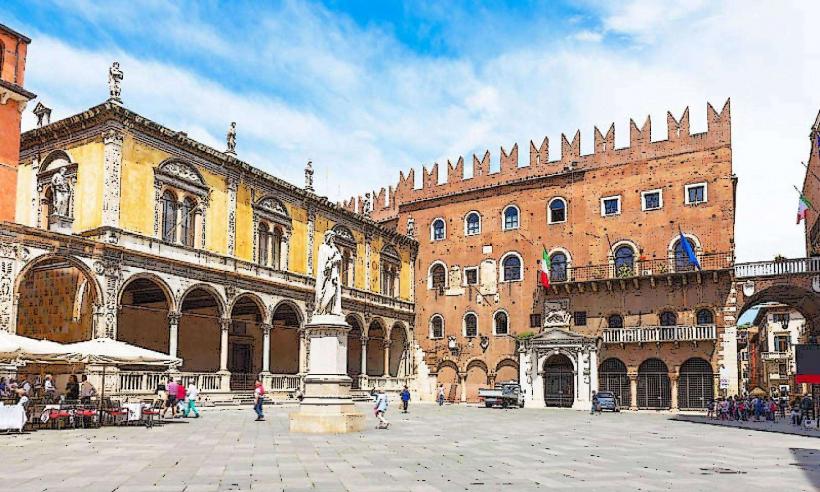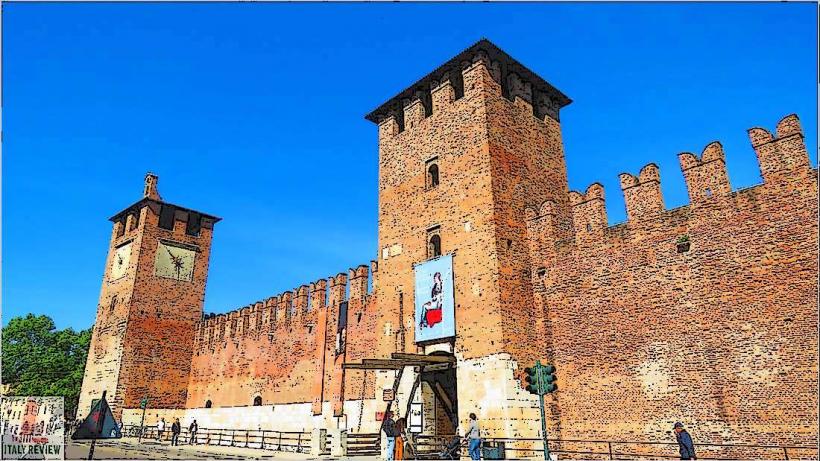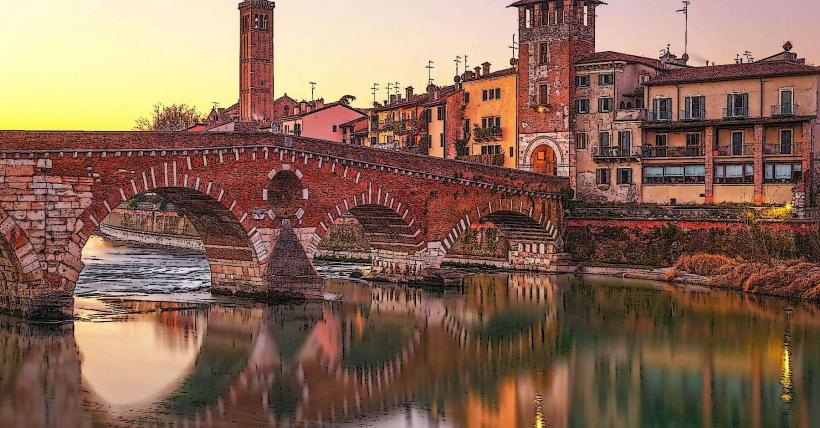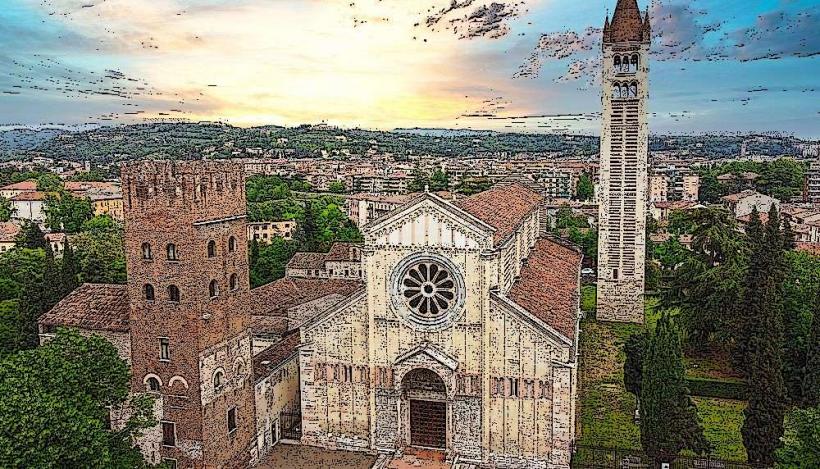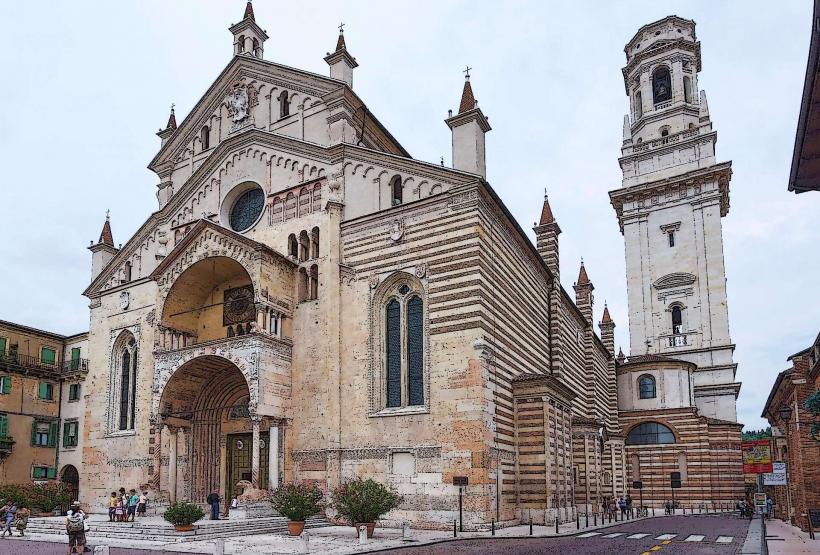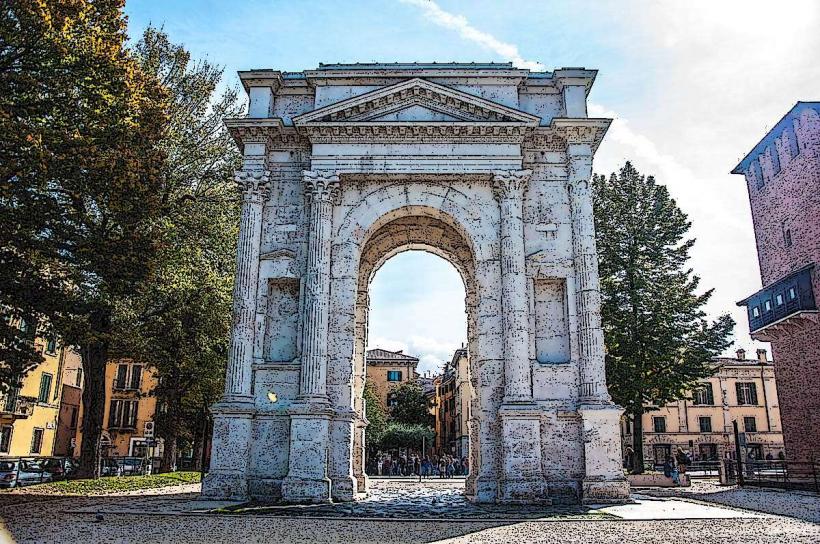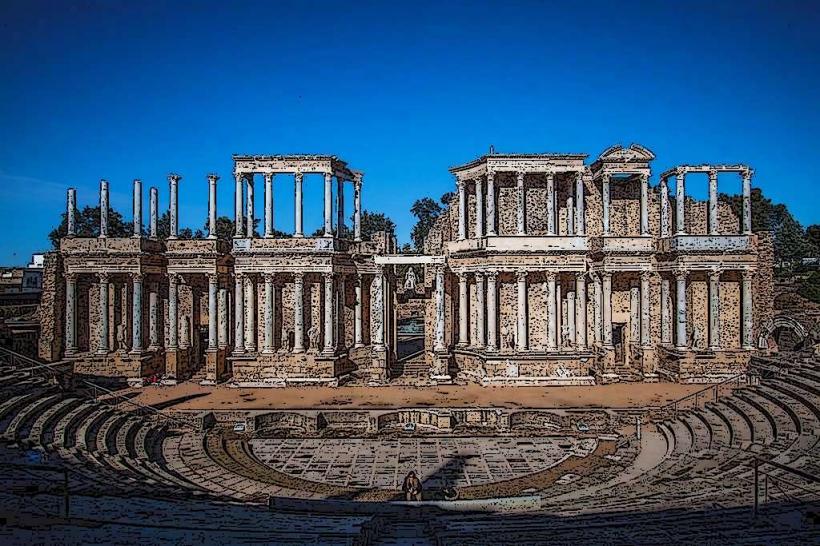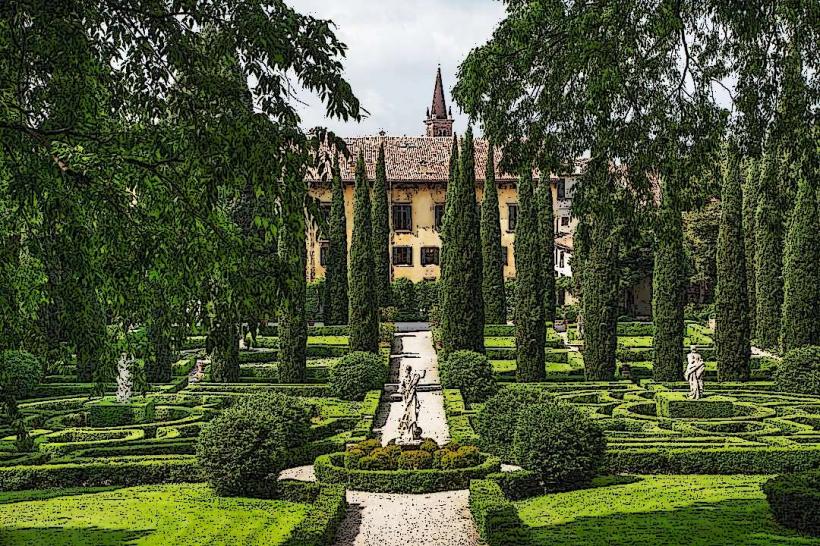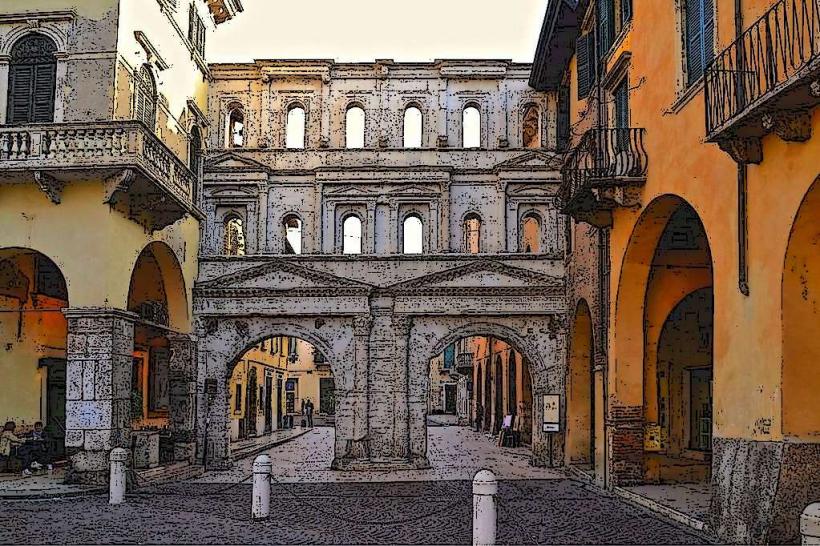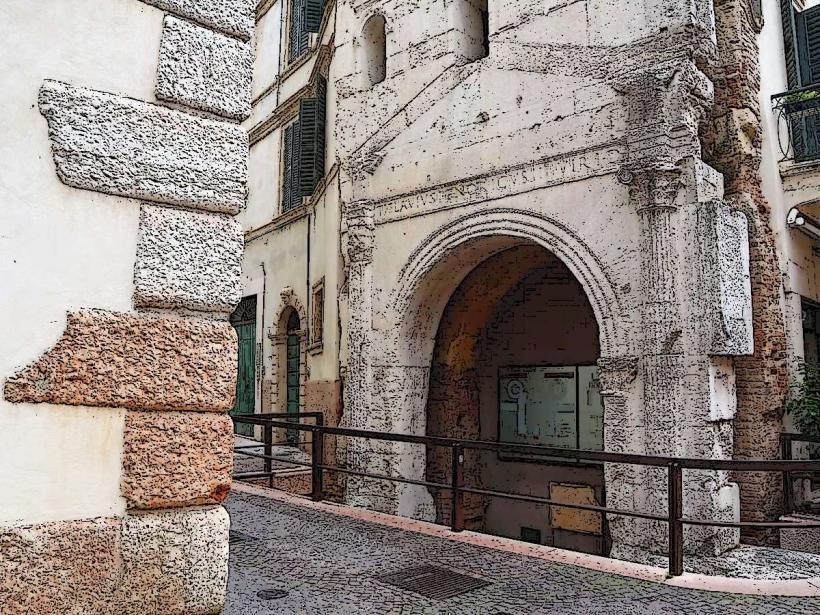Information
Landmark: Torre dei LambertiCity: Verona
Country: Italy
Continent: Europe
Torre dei Lamberti is one of the most prominent landmarks in Verona, offering a stunning panoramic view of the city from its summit. This medieval tower stands tall in the heart of Verona’s historic center, next to Piazza delle Erbe, and has become a symbol of the city’s rich history and architectural evolution.
1. Historical Background
- Construction: The tower was begun in 1172 by the powerful Lamberti family, who were wealthy merchants and aristocrats in Verona. It was intended as both a defensive structure and a sign of the family's wealth and influence. The tower was completed in the 14th century by the Scaligeri family, who ruled Verona at the time.
- Height and Purpose: At its completion, Torre dei Lamberti stood as one of the tallest structures in Verona, with an original height of 84 meters (276 feet). It was used for various purposes over time, including as a watchtower to monitor the city, as well as a bell tower.
- Restorations and Modifications: The tower has undergone various restorations throughout the centuries, especially after being damaged in an earthquake in the 12th century. Its most notable restoration occurred in the 19th century, when it was given its current height and appearance, with a final elevation of 83 meters (272 feet), making it the tallest tower in Verona.
2. Architectural Features
- Medieval and Renaissance Influence: The design of Torre dei Lamberti combines medieval defensive architecture with Renaissance elements. The lower part of the tower is built from stone, while the upper section has a brick façade that was added in the 14th century. The Renaissance-style clock on the tower, added in the 16th century, is one of the tower’s most iconic features.
- Distinctive Brickwork: The tower’s red brick construction contrasts with the white stone and gives it a distinctive, warm appearance. The combination of materials was common in medieval Verona, where building with locally sourced brick and stone was both practical and aesthetically pleasing.
- Bells: The tower houses a set of bells, some of which date back to the Middle Ages. The big bell, which is still in use today, is known as the "Marangona" and traditionally signaled the opening of markets, important city events, and curfew times.
3. Panoramic Views
- Viewing Platform: The highlight of Torre dei Lamberti is the viewing platform at the top, which provides an unobstructed 360-degree view of Verona. From here, visitors can see key landmarks, such as the Verona Arena, Castel San Pietro, the Adige River, and the surrounding hills.
- Tower Accessibility: Visitors can reach the top either by climbing the 368 steps of the tower or by taking a glass elevator that was added for easier access. The climb to the top is rewarded with one of the most breathtaking views of the city and the surrounding countryside.
4. Cultural Significance
- Symbol of Verona: Torre dei Lamberti has become a symbol of Verona, representing the city’s rich medieval heritage and its transition into the Renaissance. The tower’s towering presence in the heart of the historic center makes it an iconic feature of Verona's skyline.
- Tourist Attraction: The tower is one of Verona’s most visited attractions. Its central location, next to Piazza delle Erbe (Verona’s main square), makes it a convenient starting point for exploring other nearby sites like Piazza dei Signori, the Palazzo della Ragione, and the Scaliger Tombs.
- Public Events and Celebrations: Torre dei Lamberti occasionally hosts cultural events and exhibitions, making it a focal point for both locals and tourists.
5. Visitor Information
- Hours and Tickets: Torre dei Lamberti is typically open year-round, though hours may vary based on the season. A small entrance fee is required to visit the tower and access the panoramic views.
- Guided Tours: Visitors can explore the tower on their own or opt for guided tours that provide historical context about the tower’s construction, the Lamberti family, and Verona’s medieval past.
- Nearby Attractions: Torre dei Lamberti is conveniently located near other key landmarks, including Piazza delle Erbe, the Casa di Giulietta, and the Verona Arena, making it an ideal spot to begin a tour of the historic center.
6. Fun Facts
- Clock Faces: The large clock faces on the tower are some of the most recognizable features, and their distinctive design was influenced by Renaissance aesthetics. The clock is still in use today and strikes the hour for the city.
- Symbolic Connection to the Lamberti Family: The tower is a testament to the power and legacy of the Lamberti family in Verona, and despite their eventual decline, their tower remains an enduring symbol of their influence.
Torre dei Lamberti offers visitors a glimpse into Verona’s medieval past while providing an unparalleled panoramic view of the city. With its historical significance, architectural beauty, and cultural impact, it is a must-visit landmark for anyone touring the city.

